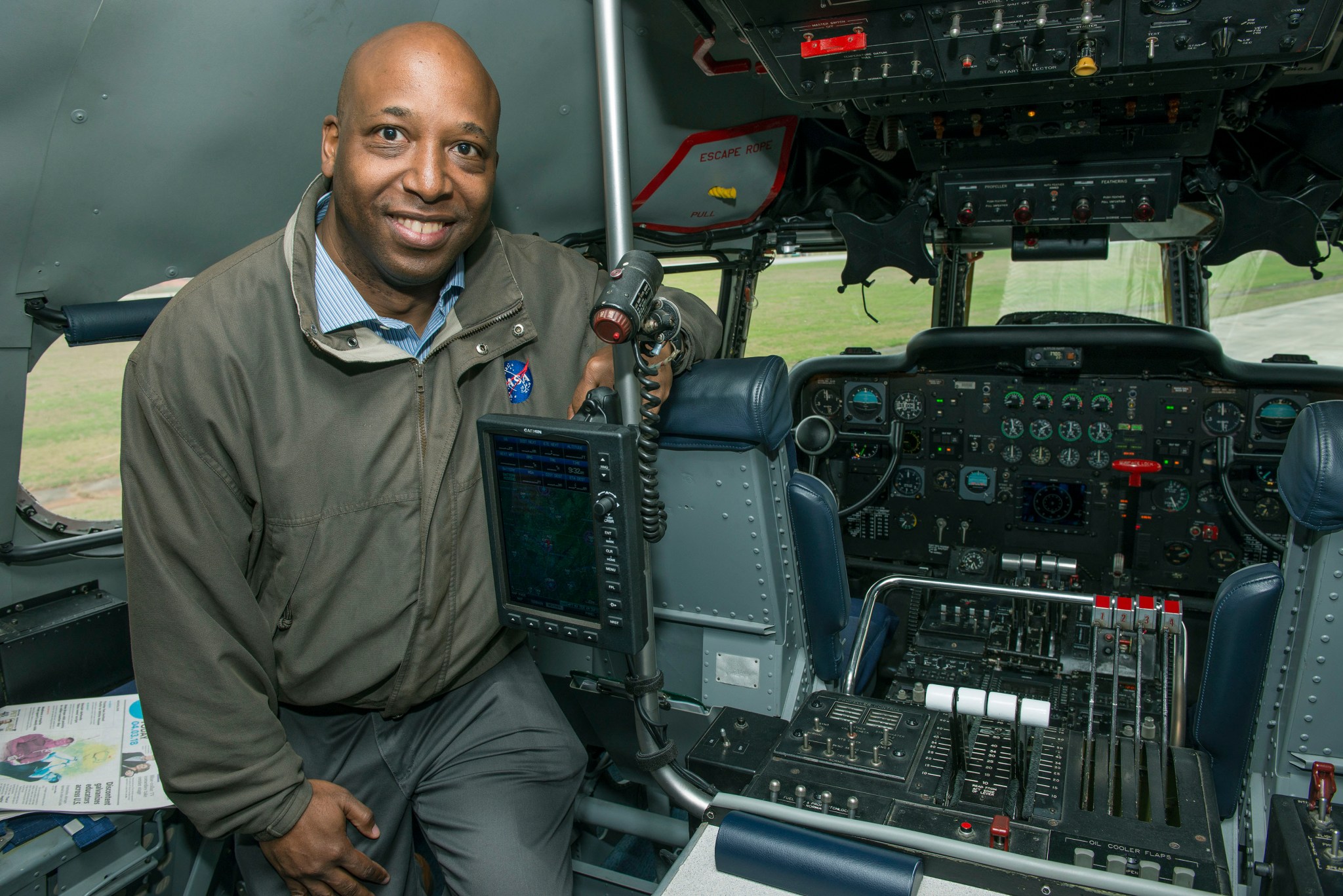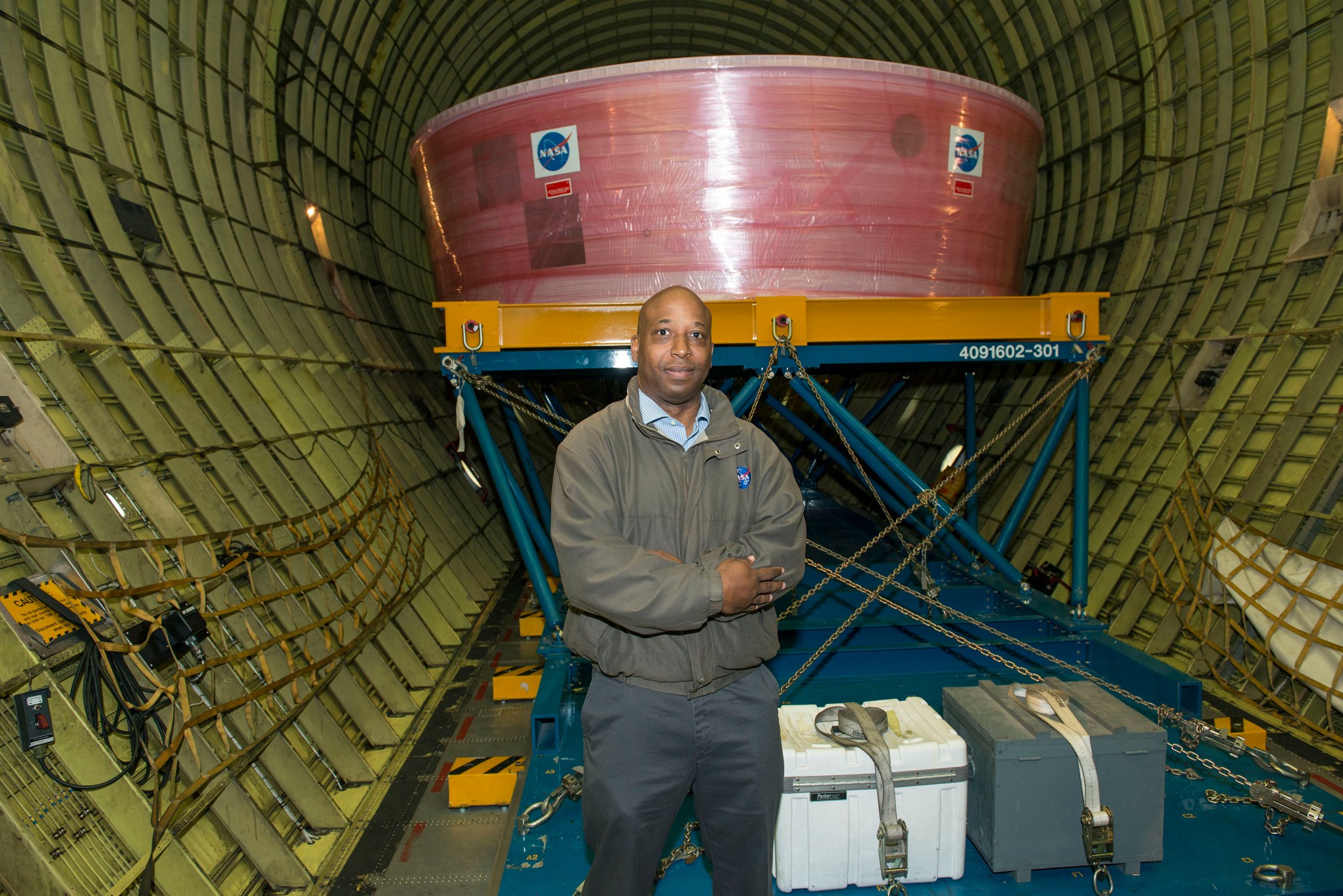At NASA, safety is part of everyday conversations and is reflected in the attitudes and behaviors of the workforce, creating a strong safety culture.
It should be no surprise then, that an engineer from NASA’s Marshall Space Flight Center in Huntsville, Alabama, demonstrated that safety-first mentality on a commercial flight out of Huntsville in January. Shortly after take-off, Rumaasha Maasha, an aerospace engineer in Marshall’s Spacecraft & Vehicle Systems Department, spotted a fuel leak during his morning flight on a work trip to Denver.

“Normally, if it’s a humid day, you’ll see vortices, or circular patterns of rotating air, off the wing,” Maasha said. “About 1,000 feet off the ground, I started seeing something white and thought, ‘maybe we’re just hitting some humidity.’ Well, then we banked to turn cross-wind and it was still doing it, and that’s when I knew something was up. I looked closer and immediately realized that we were losing fluid.”
Seeing the spewing white fuel outside his window near the wing, Maasha identified the problem as a malfunctioning vent valve. He also knew that as the plane increased velocity at higher altitudes, the Venturi effect allowed by the faulty vent valve would increase suction on the fuel tank, accelerating the leak.
“I quietly motioned to the flight attendant to come over and fortunately she was very attentive,” he said. “She called the crew and the key thing is that she did this as we were still climbing out. Within a minute or two, they reduced speed and leveled off. The fuel leak diminished immediately when they slowed down.”
Thanks to Maasha’s quick thinking and decisive action in alerting the crew, the plane was immediately rerouted to return to Huntsville International Airport. After a few groans and moans from passengers when learning the plane was turning around, word quickly spread of Maasha’s actions and he was lauded for his heroic efforts by those seated nearby. While being a 14-year NASA veteran had a lot do with his safety-first attitude, Maasha’s history with airplanes goes back much farther.
His love for aviation began as child living near an airport in Monrovia, Liberia, where his parents were professors at a university. From age 4 to 13, Maasha would visit the airport after school with his dad, watching planes take off, talking with pilots and even getting to sit in a cockpit. It was during that time spent with his dad, an engineer and geophysics professor, that Maasha developed his obsession with aviation.

He followed his dream, enrolling in Columbia University in New York — at age 15 — to earn a bachelor’s degree in engineering mechanics, followed by a master’s degree in aerospace engineering from Georgia Institute of Technology in Atlanta. Unable to immediately find a job in his field, Maasha went back to what he knew best — airplanes. He took a job as a refueler for Delta Airlines and later worked as a 747-cargo loadmaster for another airline.
In addition to a private pilot’s license he obtained a few years earlier, he completed an associates in aviation maintenance technology, becoming an FAA-certified airframe & powerplant mechanic. After a few years working for a university research center in Georgia, he was offered a position in 2002 as a contractor supporting Marshall’s Structural Dynamics Branch, and became a civil servant in 2004.
“My background was more with aircraft, so for launch vehicles, there is obviously a different environment and different flight pattern,” Maasha said. “But it’s very much the same as far as understanding the dynamics of the rocket because we try to make them as efficient as possible. So, it’s even more important to pay attention to dynamics issues and acoustics as far as a rocket compared to an aircraft.”
When he’s not safeguarding his fellow flight passengers, Maasha is ensuring the safety of NASA’s Space Launch System — the agency’s new, deep-space rocket that will enable astronauts to begin their journey to explore destinations far into the solar system. At Marshall, he specializes in structural dynamics, specifically with loads analysis, modal and vibro-acoustics testing. Recently, Maasha was part of the team that performed modal testing on the Integrated Spacecraft & Payload Element Structural Test Article stack — precursor testing for the Orion stage adapter flight hardware recently transported to NASA’s Kennedy Space Center.
“Looking back, I guess I had the perfect sets of circumstances to recognize the issue that day,” he said. “Since I was a kid, I’ve always tried to sit in a window seat near the wing. That’s not the first time I’ve noticed something. I’m sure it won’t be the last.”
Whether it’s passengers flying commercial or the astronauts that will eventually fly on Orion, it’s NASA engineers like Rumaasha Maasha who ensure they travel safely.




























